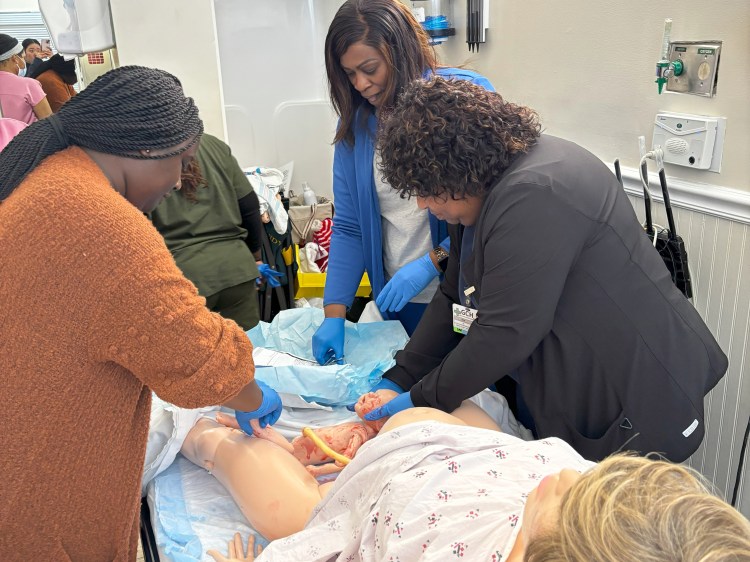UAB Mobile Sim delivers obstetric emergency training

UAB Mobile Simulation is a literal driving force in obstetric emergency education throughout rural Alabama.
This past February, the mobile sim team visited J. Paul Jones Hospital and Cahaba Medical Care in Camden, Ala., as well as Greene County Hospital in Eutaw, Ala., to deliver simulation experiences focused on rapid labor, more commonly known as precipitous delivery.
In the latter, the UAB Mobile Simulation team presented a dynamic simulation guided by the expertise of Dr. Sharon Phelan, adjunct professor in the Department of Obstetrics and Gynecology in UAB’s Heersink School of Medicine.
The learners from Greene County Hospital focused on preventing complications during precipitous delivery, applying skills in assessments, complications recognition and Apgar scores. Specifically, the simulation showcased the vital roles of timely recognition, communication and continuous monitoring in preventing challenges during childbirth.
In Camden, UAB Mobile Simulation teamed up with J. Paul Jones and Cahaba Medical to orchestrate an immersive simulation aimed at tackling the challenges of caring for a patient experiencing precipitous delivery.
According to mobile simulation coordinator Mercedees Willis, learners seized the opportunity to deepen their understanding of critical elements involved in managing precipitous delivery. The simulation provided a hands-on experience, focusing on assessments, recognizing complications and mastering the intricate process of performing Apgar scores, among other crucial skills.
“The mobile simulation team not only does a fantastic job creating an environment that is stressful enough to mimic a real scenario, but also creates an inclusive and friendly atmosphere to actively participate in the management,” participant and Cahaba Medical Care resident Michael Wu, M.D., said.
During the sim, emphasis was placed on the pivotal role of timely recognition, effective communication, continuous patient monitoring and vital sign assessment in successfully navigating precipitous delivery scenarios.
“J. Paul Jones sees a lot of OB emergencies, and having a simulation with staff definitely refreshed our knowledge on the management,” Wu said. “Having the sim team here also made us more aware of exactly the amount of resources we have in the hospital that may impact clinical decision making. I think simulation is a great tool for learning—a creative way to promote team cohesion, offering learners a deeper and longer-lasting impact.”




0 Comments